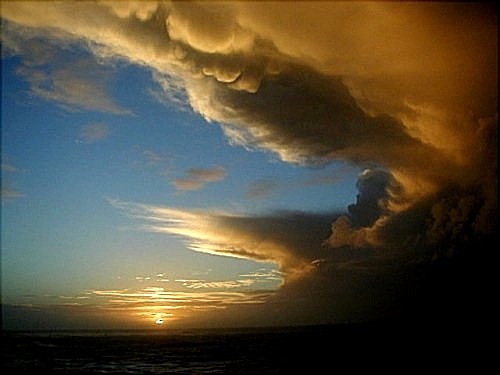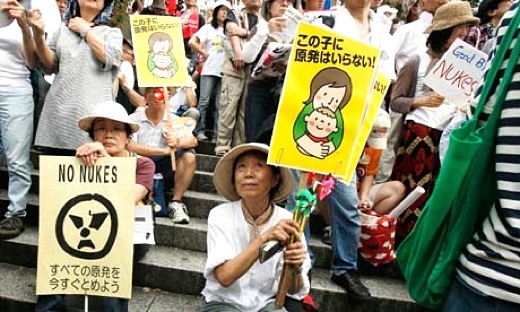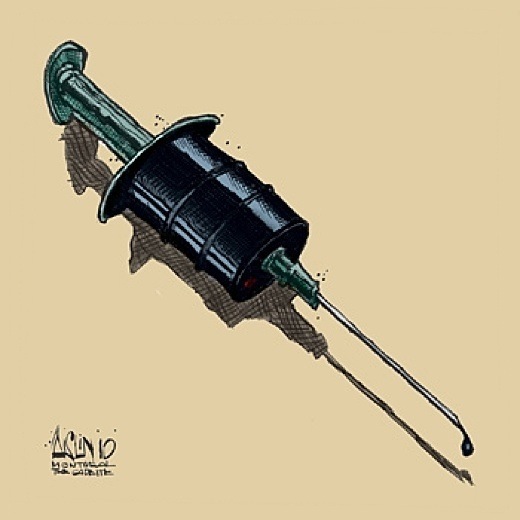By Dan Bednarz on 30 May 2012 for Health After Oil -
(http://healthafteroil.wordpress.com/2012/05/30/goodbye-to-bad-knowledge/)
 Image above: Andy Lackow envisions the future of nursing in an illustration for Johns Hopkins Nursing Magazine. Not likely. “From (http://theispot.blogspot.com/2011/03/andy-lackow-healthcare-of-future.html).
Image above: Andy Lackow envisions the future of nursing in an illustration for Johns Hopkins Nursing Magazine. Not likely. “From (http://theispot.blogspot.com/2011/03/andy-lackow-healthcare-of-future.html).A year ago I asked, “How to understand health care’s inability to recognize that modern society has reached the limits to growth?”[i] Since then I’ve unsuccessfully attempted to write on the urgent and bedeviling question, “What are the nuts and bolts of organizing a “small is beautiful” health system?” Here I want to lay the ground for exploring this second question while weaving in final comments on the first question.
One trouble with this second question is identifying and mapping the welter of dynamic forces at work. Equally significant, the question implies that we can rationally transition to an end-state of a viable health system. This may still be possible, but it becomes less likely the longer the current culture of over-consuming/toxic waste-dumping/unequally distributing finite and overexploited resources hangs on.
In the lower energy, resource constrained, ecosystem degraded/destroyed and environmentally hazardous world we are entering complex high-tech medicine will contract or collapse, and modern public health is challenged to reorganize –it actually must in some senses expand!- or collapse. Of this there is no doubt.
Socioeconomically, reaching the limits to growth means the impossibility of repaying accumulated debt and that massive unemployment will worsen under current institutional conditions. Politically we are witnessing governments not only caught up in a contraction of tax and revenue bases, but utterly failing and concomitantly repressing their citizens so as to maintain –and deepen- class inequalities and support for too big to fail private entities. This is the antithesis of resilience.
One looks in vain at mainstream health journals –JAMA, NEJM, The Lancet, American J. of Public Health, etc.- for discussion and analysis of how the thermodynamic, ecological, political, financial, and socioeconomic/class conflict predicaments in which humanity is enmeshed affect health systems. To the extent these issues are considered in these journals, they are treated separately –like boutique items- and as matters of risk management in the context of weathering the Great Recession (hoping growth will restart).
Virtually nowhere in these journals are the primal issues of protecting the health of the public and maintaining the viability of health systems in a wealth-destroying[ii] industrial economy so much as broached. For example, recent treatments of the health system collapse ongoing in Greece imply the cause is the so-called Great Recession that has led governments to choose to impose austerity. In realpolitik, the European Union, ECB and IMF are shaking their pepper spray cans to douse Greece as a (futile) intimidation of Italy, Ireland, Portugal, and Spain. To posit austerity as a manifestation of a class conflict response to ecological overshoot in health policy analysis is to guarantee being ignored by “serious” analysts and policy makers, all of whom are devoted to incremental change and never questioning governments’ utilitarian pretensions. But this status quo framing of the issues will become irrelevant as Greece et al. are cannibalized to preserve current distributions of wealth, status and power –albeit to no lasting avail.
The health sciences fail to recognize that –like all modern institutions during the 20th century- they have expanded and become socially and technologically complex upon a foundation of natural resource abundance and the earth’s ability to absorb waste and toxic insults from modern society. This growth was anomalous, not irrepressible and infinite; indeed, it tracks in unison with the availability of fossil fuels, especially oil. Until recently energy was cheap and seemed limitless, as did other natural resources; climate change risks remain “political,” not corporeal and existential. The overexploitation of natural resources and population growth should be apparent and frightening, but they are not; and wastes and pollution continue to be –from a grossly misguided economic growth point of view- “externalized” or “discounted” for future generations to gag on.
What would the institutional leaders of public health, nursing and medicine do if they were to recognize that our culture is at the climax stage[iii] of resource consumption and beginning to enter the collapse/release phase of ecological overshoot? It has finally sunk into my being that they would view this as a threat to their grip on power, not as a spur to courageous action. They have one-track minds, which means no experiential knowledge, intellectual rationale, ethical foundation or incentive/reward structure to contemplate reducing complexity and conserving resources (efficiency is purposefully left off this list as inadequate and in many instances counterproductive). In fact, most will find the arrantly imperative ideas of massive conservation and complexity reductions abhorrent signs of failure –again, a threat to their power and sense of their legacy.
These leaders have been educated in inwardly focused decision sciences and socialized in the Game Theory version of the Prisoner’s Dilemma, topped off with a heaping portion of Machiavellian bureaucratic politics. These bodies of knowledge are reflections of a social construction of reality that prevents them from considering, let alone coming to terms with thermodynamic and ecological realities that underlie the functioning of all modern institutions. The further we descend into crisis the less germane and more pernicious such socially constructed bodies of knowledge become.
Is this a hopeless situation? No, but it is a dire one because those with institutional power, who control the distribution of human and natural resources, lack the worldview (intellectual and experiential knowledge, ethics, sensibilities, intuition) to do the right thing.
To summarize, the current growth-centered paradigm in the health sciences –and modern industrial culture- produces knowledge and ethics designed for dominion over nature, social control exercised through class conflict and perpetual economic growth. This knowledge has always been absurd, but now it is bad knowledge because the natural resource base, waste sinks and ostensibly vast ecosystem services that allowed it to flourish have become limiting factors. On the other hand, reaching the limits to growth is the root metaphor of knowledge and ethics based upon a realistic appreciation of humanity’s place in nature. This is the good knowledge upon which to reorganize modern culture. Put differently, there is a mismatch between the institutional power vested in the bad knowledge of growth-based systems and the embryonic power of good knowledge organized around such metaphors as reaching the limits to growth and “Small Is Beautiful.”
Mutatis mutandis, a commenter on the world of philanthropy describes the dilemma of the health sciences:
“In the end, philanthropy wants the wrong thing. It may think that it ought to want what the lovers-of-nature want, but its actions reveal that, come what may, it loves other things first: the maintenance of its privileges, the survival of its self-identity, and the stability of the social and economic systems that made it possible in the first place.”[iv]
That’s enough about why those running the health sciences will lose their grip as the forces of nature destroy and then reshape human institutions. I am hopeful (well, it’s more like a spiritually sustaining fantasy) that health systems and the master political and economic institutions that control them deteriorate at the right pace to make our collective situation desperate enough that citizens realize that we’re in a post-growth world and take action before large-scale collapse occurs.
Other narratives are in competition with the end of growth/ecological overshoot one I’m proffering. They are typified, on the one hand, by a plethora of new books on how “in a few short years” all our energy, socioeconomic and environmental problems will be resolved by the market and technological breakthroughs and, on the other hand, by appeals to the divisionary and insidious scapegoating and xenophobic propensities of humanity.
Above all else, human adaptability and decency should not be discounted, especially as the phase change from climax to collapse –however dimly perceived or intuited- spreads the insight/gut feeling that there are no mainstream, incremental, conventional problems solutions for the gyre of predicaments we face. Bluntly, people do stupid, lazy, vengeful, wicked, self-destructive, self-interested and delusional things; nonetheless, they are capable of incredible feats of collective action, creativity, insight and survival. To oversimplify a bit, it all depends upon how they define the situations they are in.
The nascent paradigmatic and mythological revolution (a new social construction of reality) in health care and public health largely is coming from below and from outside, and not at all from the top. It is taking place in a larger context of the de-legitimization and failure of existing institutional arrangements. This paradigm shift is what I want to contribute to in future essays.
[i] Bednarz, Dan. “As health care fails, Part I: Power, knowledge and resistance.” Energy Bulletin, May 12, 2011. http://energybulletin.net/stories/2011-05-12/health-care-fails-part-i-power-knowledge-and-resistance.
See also:
Ea O Ka Aina: Post Collapse Healthcare 4/29/11
Ea O Ka Aina: It's Not the Economy Stupid! 1/28/09 .








